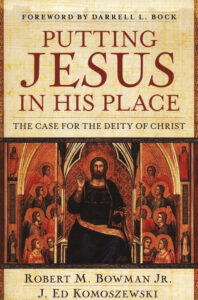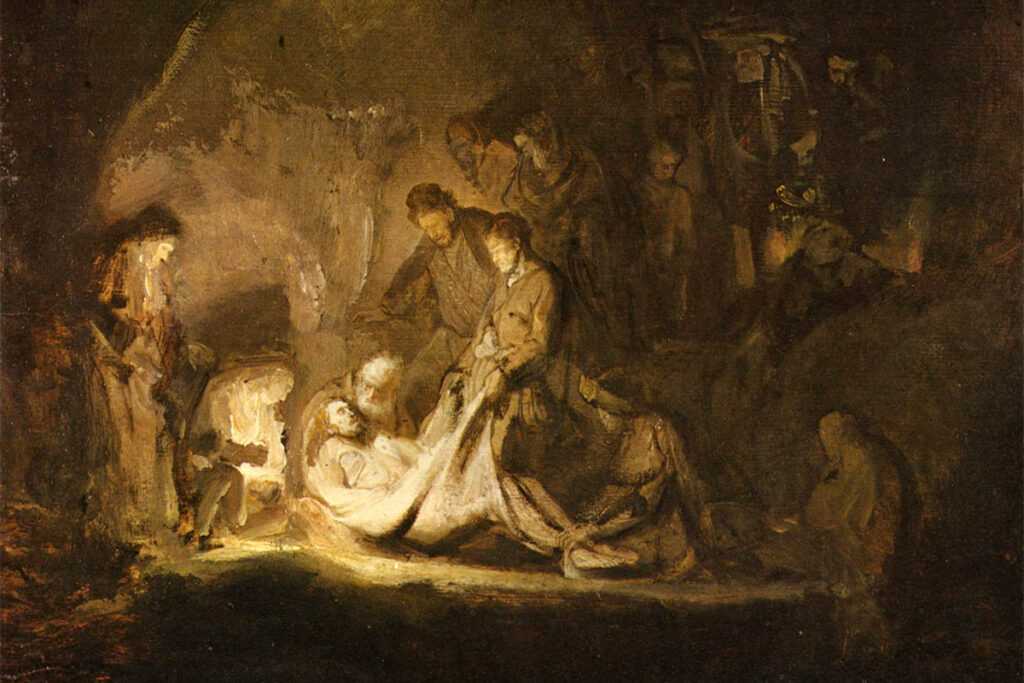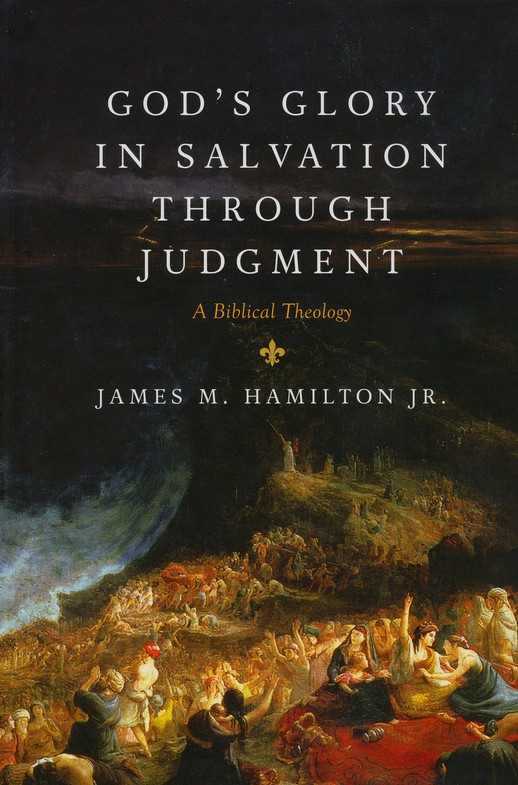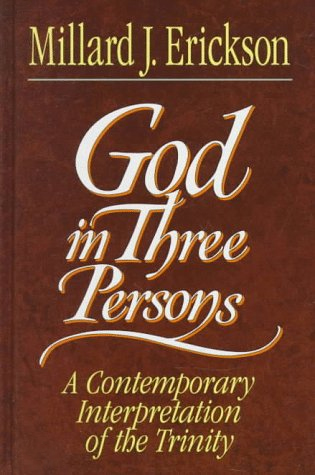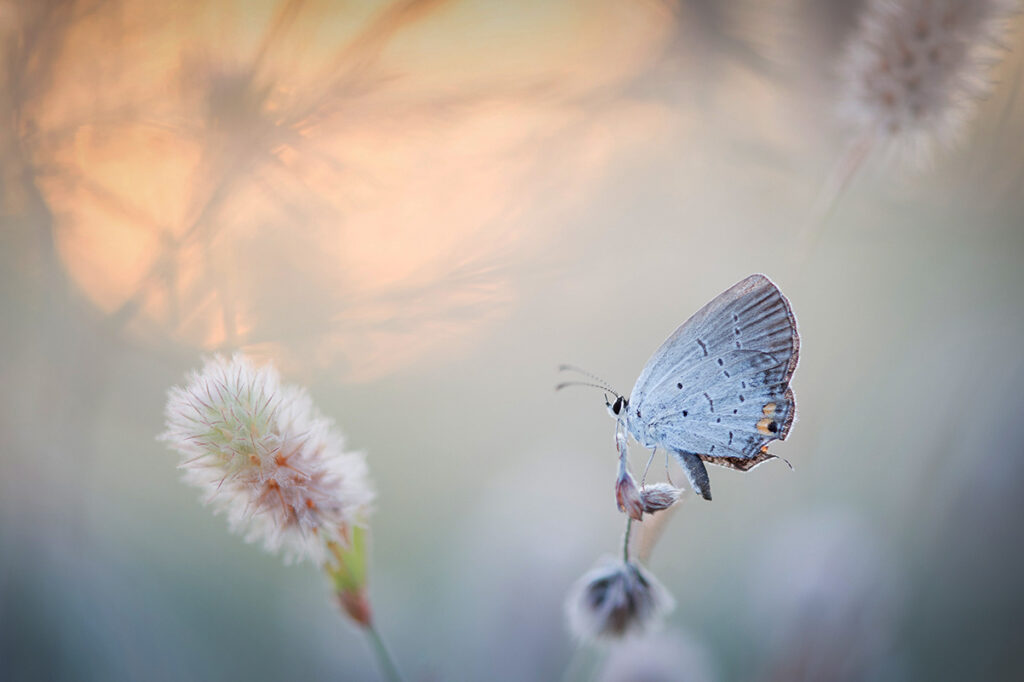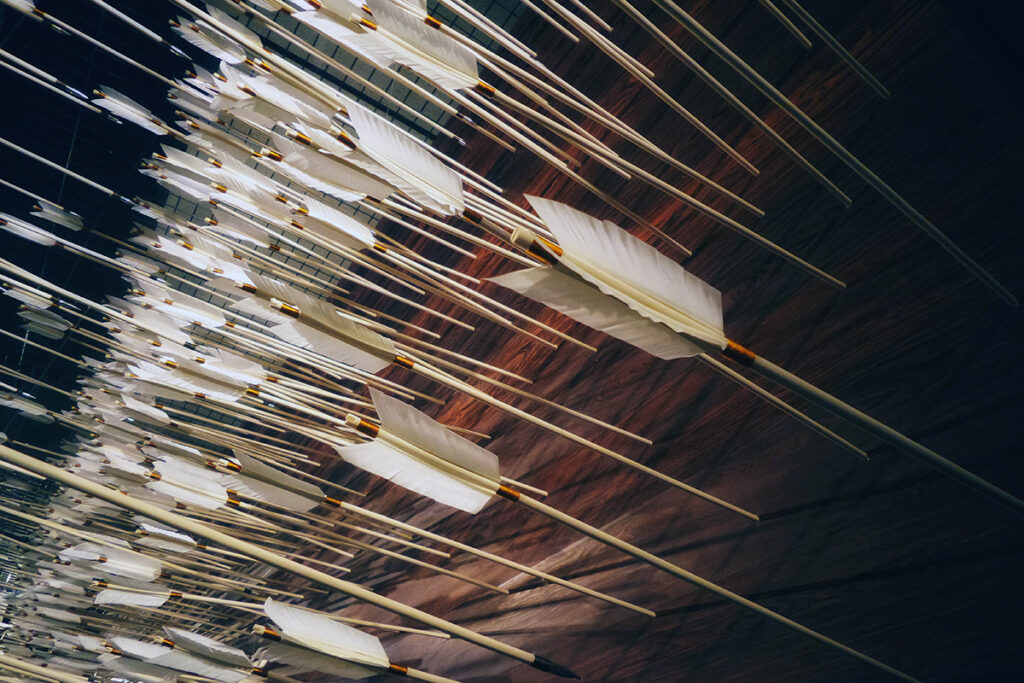The book Putting Jesus in His Place: The Case for the Deity of Christ begins with Part one, entitled “The Devotion Revolution: Jesus Shares the Honors Due to God.” There are five parts of the book which correspond to a helpful acronym concerning the deity of Christ. HANDS, which stands for Honors, Attributes, Names, Deeds, and Seat, is a fitting and memorable way to retrieve biblical and decisive facts about Jesus’ deity. Part two is entitled “Like Father, Like Son: Jesus Shares the Attributes of God.” The following section is entitled “Name Above All Names: Jesus Shares the Names of God,” part three of the book. Next, Part Four is entitled “Infinitely Qualified: Jesus Shares in the Deeds that God Does.” Finally, Part five is the last section of the book entitled “The Best Seat in the House: Jesus Shares the Seat of God’s Throne.” While all five areas consist of numerous chapters, the authors make a comprehensive Old and New Testament case about the deity of Christ before presenting their conclusions.
The Honors of Christ
While the book’s title intends to evoke provocative interest, it is a somewhat culturally cynical way of situating a reader’s view about the rightful place and status of Jesus as God. Some chapters similarly communicate ideas to introduce the subject matter, but the book is not without exceptional subject matter and substance at both academic and theological levels. The book is a treasure of meaningful value concerning the deity of Jesus and is not to be taken lightly. The text is replete with intertextual references to Jesus as God well beyond His earthly offices as Prophet, Priest, King, and Messiah.
As the beginning of the book traverses Scripture to detail the numerous ways Jesus is glorified and worshiped as God, various participants are highlighted in explicit detail. Background facts concerning the historical practice of worship involved numerous New Testament references back to the Old Testament that connects to Christ Himself before He was born. Moreover, the methods of worship given in songs or by doxology and praise reference back to the same styles of reverence. Biblical writers persistently call attention to the due recognition and attention to Jesus the Messiah as Christ of the New Testament. Glory, Honor, and Praise was directed exclusively to Jesus, as made evident during the new covenant looking back through the prophets, poetry, and law narratives.
Exhaustive references are given about who the participants of worship include. Readers are given accounts of angels and disciples of Christ worshiping Jesus as God from specific historical instances in clear detail. It is demonstrated that there is no ambiguity about Jesus’ identity as God as His followers and creatures give Him due honor and glory. From the Old Testament to the New, worshipers of Christ widened in scale to eventually include everyone (Phil 2:10-11). How Jesus is worshiped within the gospels and the apocalyptic account of Revelation correspond to Scriptural details about total worship, including specifics concerning where, how, and why.
As Jesus was and is thoroughly recognized as God, He was the object of worship to assure confidence that He is deity. Specifically, as a deity is an object of prayer by definition, He remained the recipient of prayers shortly after His death, burial, resurrection, and ascension. For example, recall the martyr Stephen’s prayer right before being stoned to death, “Lord Jesus, receive my spirit” (Acts 7:59-60). Stephen’s act of prayer was an explicit acknowledgment and testimony of Jesus as God. His final act of life before death was an act of worship to God in the person of Jesus Christ.
From the first century, apostles, disciples, and believers, prayers were uttered before Jesus as forms of adoration, confession, thanksgiving, and supplication. Apostle Paul himself prayed for deliverance from an infirmity (2 Cor 12:8-9), and there were ongoing intercessions among members of the early church as Jesus invited His followers to prayer (John 14:14). Prayers offered were heard and answered as further evidence of Jesus’ deity, as made clear by recorded outcomes within the post-ascension New Testament.
Just as a deity is an object of prayer, God is an object of praise and worship by song and hymns. Songs of affection offered to Lord Jesus are further tacit acknowledgment, if not direct, of Christ as God. Songs and hymns of passion from the heart represent affections and devotions to God in the person of Jesus to further proclaim Him as divinity because of who He is, what He has done, and what His promises are. Worship and praise toward Jesus are an expression of authentic adoration given by the book of Psalms and materials unique to the first-century devotion from the heart. Whether individually or in a gathering of people, worship was a steady and specific way of encountering God as the deity of Jesus.
It can not be concluded that to worship Jesus as God is to exclude God the Father and Holy Spirit. Jesus Himself said that honor toward the Son is honor of the Father (John 5:23). Further references in honor of God call attention to belief in Christ in unison (John 14:1). Various examples demonstrate that God is the primary object of faith (Mark 11:22, Heb 6:1, Heb 11:6). Fear and reverence are the dispositions of the heart and mind among believers during worship. For example, the Old Testament prophet Isaiah instructs Israel to regard the LORD as holy and let Him be their fear and their dread (Isa. 8:12-13). The fear in this instance is not to revere as apparent among other passages having a sider semantic range. The fear in this context and semantic use is actual fear as an unpleasant emotion caused by the threat of danger, pain, or harm. Moreover, in this passage (ESV), “dread”‘ is to terrify or undergo a terrifying experience.1 By comparison, the reverence of Christ as God, as charged by Paul (Eph 5:21), is rendered as “the fear of Christ.” In this case, the underlying linguistic use of the term “fear” is a reverence or deep respect by definition and not out of alarm, terror, or fright.2
Further worship of Christ involves rites or sacraments of observance as He requires of His followers. Such practices directed toward another person, perhaps even venerated, would not historically or presently apply to a mortal being. The practice of rites instructed by Jesus, such as communion and baptism, involved the efforts of believers and followers to acknowledge and revere Him as God since it is demonstrated He was not merely a mortal being. Devotion to Christ involves obedience and service to Him out of an obligation of love, just as it was within the Old Testament. As made clear, the love for God pronouncement through the Shema (Deut 6:4-9) is also supported by further passages (Ex 20:6, Deut 5:10, Deut 11:1) that reflect what Jesus spoke of concerning obedience (John 14:15, John 14:21, John 15:10). As a direct correlation between the love of God as Father to include the Son and Holy Spirit, Christ has a rightful claim as God to what is due by worship from a heart of devotion, affection, and obedience.
The Attributes of Christ
While part one of the book about Christ’s deity concerns honors due to Him, part two is dedicated to His attributes. When considering His attributes, it is helpful to think through them relative to God the Father, as evident throughout the Old Testament. It is also useful to understand His attributes by way of definition as they’re properties or quality characteristics of Christ as God. To attain an essential understanding of His attributes, there are qualities about Him distinct from characteristics essential to His being. For example, God is well-known as holy, omniscient, omnipotent, and omnipresent, but some would associate goodness and love with His essential being. Conversely, many others would scripturally demonstrate that goodness, love, and perfection are set within God’s attributes.
One might infer that God’s incarnate and bodily dwelling as Jesus is limited, but that assertion contradicts what Paul wrote as “the fullness of God” within Christ (Col 1:19). As God is deity, it must follow that deity resides within Christ entirely. The bodily incarnation of God as Christ resides within Him as it is authoritatively written, “for in Him the whole fulness of deity dwells bodily” (Col 2:9). This is to say that the attributes of God and the essence of His being carries over to Christ. By the nature of Christ observed as God, the Father is in Him (John 14:10) to reveal Him as deity and the attributes that follow accordingly. It can not be concluded to the contrary that Jesus is separate from the Father or as a free-standing God or deity who possesses the exact attributes. Jesus is the perfect expression of the invisible God who always was in existence before His time with humanity on Earth (John 8:58).
As Christ has always existed eternally with God the Father and Holy Spirit as God, He was also present during generations past throughout Old Covenant history. Before Christ in the flesh lived, He was active among the patriarchs and prophets to give biblical evidence of this deity further. He attests to His involvement with ancient Israel to further support His claim to deity. He even says as much by declaring His dismay at Israel’s persistent obstinance (Matt 23:37, Luke 13:34). The context of Jesus’ heartfelt dismay at Israel corresponds to their rejection and killing of prophets who claimed to have been sent as God to protect them from sure judgment if they were to persist in rebellion.
Apostle Paul further shows that Christ, before God incarnate, was in the wilderness with Israel as the rock that was struck to produce water to quench their thirst for survival (1 Cor 10:4). He wrote explicitly that Christ was the rock that existed long before His presence on Earth as Jesus early in the first century. Some would argue that the rock was a type of Christ, but that is not what Paul wrote explicitly. The scriptural assertion that Jesus was the rock present among ancient Israelites further reinforces His divine nature, an attribute of eternality. Before Moses, Jesus claimed before Jewish leaders that He existed before Abraham (John 8:58). The strenuous objection of the Jewish leaders who took offense knew what Jesus claims as they knew that His claim of divinity would require His existence before His birth to therefore conclude He is God.
As if it wasn’t enough to claim his eternal status and existence before His followers and Jewish leaders, He performed many miracles of astonishing significance. The miracles in themselves were assuredly alarming and spectacular to witness, but the implications concerning He who performed those miracles were of far greater gravity. Questions concerning who and what must such a man be to carry out such actions (on numerous occasions) required anyone and everyone to contemplate who He claimed to be. Those who opposed Him and rejected Him knew exactly who He was, just as they did the prophets. The weight of their opposition added further credibility and strength to Christ’s claims about His divinity.
The depth of theological discourse continues around Christ’s divinity regarding His aseity, immutability, and transcendence. Jesus’ existence before He took bodily form is made apparent among numerous biblical passages of historical validity. Scriptural support for His existence offers detail about what that entailed (John 1:3, 10; 1 Cor. 8:6; Col. 1:16). It can not be overstated what His continuing roles were during the course of Creation events, as it is purported to have created all things (Col 1:16). Moreover, aside from Apostle Paul, the least of the Apostles (1 Cor 15:9), John the beloved, with direct one-to-one interaction with Christ, wrote, “All things came into being through him, and without him not one thing came into being” (John 1:3). As sure as a declarative statement can get concerning Jesus’ divinity, a first-hand witness account of Christ’s life and teachings reveal Him as Creator God.
In answer to anyone who claims Christ was created, there is a contradiction in the translation of Proverbs 8:22. The NRSV rendering, “The LORD created me at the beginning of his work, the first of his acts of long ago,” corresponds to NET, ISV, LEB, and LXX translations with the term “created” as compared to “possessed” among various other English translations. In his systematic theology, Grudem wrote that Proverbs 8:22 should not be understood as a reference to the Son of God but rather wisdom personified.3 However, it was also his view that the LORD “possessed” wisdom and did not create it.4 Moreover, the term “created” as rendered from the root language (and the Septuagint) to English is probably a homonym for “possessed” with the same spelling that has different meanings and origins.
Jehovah’s Witness (JW) claims that Christ is a created being as interpreted from Prov 8:22, Col 1:15, and Rev 3:14 stand in contradiction to John 1:3, 10; 1 Cor. 8:6; Col. 1:16; Heb. 1:2, 10–12. However, JW’s use of the “beginning” is generalized within the context of Christ as firstborn creation chronologically situated in time. More specifically, time itself had already been created for Jesus to become the beginning (to create all things). So the intended use of terms to explain conditions contrary to the nature of God and Christ’s being (and attributes) is made definitive and clear elsewhere as a matter of support for Jesus’ claims of divinity and aseity.
To further consider Christ’s divine nature, His immutability comes from numerous Scriptural passages and Old Testament inferences. However, no biblical reference is likely so explicit as Hebrews 13:8, “Jesus Christ is the same yesterday and today and forever.” Furthermore, during His time with humanity, numerous life events involved His character and actions to demonstrate His impeccable behaviors as a man consistent with His divine nature. Christ’s permanence and endless ways are enduring to help explain the conditions in which all things are created through Him.
The final areas of interest about Christ’s attributes are His omnipotence, omnipresence, omniscience, and incomprehensibility. To more directly put it, Christ’s divine nature is especially made evident by what he accomplished and claimed while present among people during the first century. His accomplishments were not merely achievements of human merit but thoroughly supernatural to make abundantly clear His capabilities as an attestation of what He claimed and required. God’s presence among people as Christ was His way of calling attention to their condition with proof of who He is. While there was a repugnant ongoing effort to deny Him as the Son of God, Messiah, and incarnate God, Jesus’ actions and His attributes could not be denied or dismissed through opposition or indifference. His actions demanded attention from everyone because they revealed who He is and what He claimed as true. No matter resistance, opposition, or inattention, His supernatural work preceding His death, resurrection, and ascension set the course of history for all time.
According to numerous biblical accounts of Jesus’ human nature, there is no question He endured physical limitations. He slept, ate, drank, and became tired and thirsty, yet He also made evident His omnipotence during His ministry. Through humility, He at times set aside His divine nature and emptied Himself to live as fully man among people. Yet, He fed thousands of people with scant food materials (Matt 14:15-21), removed demonic spirits from people (Matt 8:28-34), healed sick people (Luke 4:40), raised the dead (John 11:38-44), walked on water (Matt 14:22-33), and restored people’s health without His presence from afar (Matt 15:21-28, Matt 8:5-13, John 4:46-54). Among various recorded and unrecorded supernatural acts He performed with eyewitness accounts, it was only certain that no one could possess omnipotent and omnipresent capabilities without having the attributes of a deity. The gospel accounts of His omniscience further reinforced recognition of Jesus’ divine nature and not by what He said but by what He did. He knew in advance that Judas would betray Him. He knew of the husband’s married to the woman at the well. In advance, He knew Peter would deny Him. He knew about the forthcoming destruction of the temple. The evidence of Jesus’ divine attributes was overwhelming to people of His time as they are today, even after His resurrection and work to form the Church down through the centuries.
The Names of Christ
To further make a case for the deity of Christ, there are names He possesses that have spiritual power and authority. They are descriptive and indicate a title for a specific purpose and function, yet throughout Scripture, there are numerous names attributed to God that apply to Christ. Names given and applied to persons in proper form to associate with identity are a common means of recognition and distinction, but the differences are blurred with God. Sometimes, names associated with God are not merely for identification purposes, but they are also descriptive of His attributes and being. The names associated with Christ connote meaning related to the context in which they are used. Designations of Jesus are about honors, attributes, actions, and positions He receives.
The name “Jesus” means “Jehovah (YHWH) saves,” as the angel of the Lord (Gabriel) delivered this name to His parents as YHWH God has given this designation to Him (Matt 1:21, Luke 1:31). To convey eternal meaning from when He appeared in the world via virgin birth, He was designated the lamb of God to save His people from their sins. Jesus would do that through His life ministry, redemptive work, and everlasting Kingdom on Earth by the Holy Spirit’s presence and help. Yahweh God the Father bestowed upon Jesus the name Yahweh Jehovah as it is the name above all other names. It is the supreme and highest name in existence by which people must be redeemed, as there is no other name under heaven by which we must be saved (Acts 4:12). His name, the name of Christ, as Jehovah and Lord, is excellent in all the earth in this age and the age to come (Ps 8:1, Eph 1:21).
In numerous passages within the New Testament, there are various accounts of miracles performed in Jesus’ name, including healings and exorcisms that demonstrate power in the name (Mark 9:38–39; Luke 10:17; Acts 3:6, 16; 4:7, 10, 30; 16:18). The loyalty sacrament of baptism is performed in Jesus’ name (Acts 2:38; 8:16; 10:48; 19:5; cf. 22:16) for repentance and the washing away of sins. Repentance and the forgiveness of sins are proclaimed in His name for salvation (Luke 24:47). Through His name, people are saved (Acts 10:43), and it is for His namesake that the sins of people are forgiven (1 John 2:12). The name of the Lord is exceedingly significant and productive as it has the power to save anyone who calls upon it (Acts 2:21, Joel 2:32).
The meaning of the name of Christ Jesus as God is particularly explicit with the prophet Isaiah and the apostle John. Throughout generations, from the time of old covenants to the new, the significance and power of Christ’s name speak of His divinity as He is sought and cherished as Messiah. Through Christ, God transforms the hearts of people as He promised, which is a miracle of enormous and lasting power concerning regeneration, renewal, and salvific purpose. Back at the time of Isaiah’s prophecy, He foretold of the name of Jesus as Immanuel translated, “God is with us” (Isa. 1:23, 7:14). By this name, He will rule over His people and redeem and restore them (Isa. 40:9–11; 43:10–13; 59:15–20).
Of further significance is the name “Word” given to Jesus in John 1:1. To communicate His eternal place upon Creation as God and with God and demonstrate His deity, lordship, and authority over all (Rom 9:5) creation. He was and is declared and recognized as God and Savior (Titus 2:13, 2 Pet 1:1) within the New Testament who rules at His seat of power. The spiritually significant meaning of His name and title as “God of gods and Lord of lords and King of kings” (Dan 4:37 LXX) further establishes eschatological relevance as His will is ultimately accomplished upon His return as prophesied for thousands of years. The Lord Jesus, as God, is the great I AM, Alpha and Omega, beginning and the end as He is Lord and Savior.
The Deeds of Christ
The book’s next section that defends Christ’s deity is about His activity. When the entirety of everything He has done is taken as a whole, it is impossible to recognize His identity as anything other than God. From the beginning of the universe to its end, He is unchanging as He does what God the Father and Holy Spirit do. The universe, its fine-tuning, and sustained existence are held together by Him and through Him. As He created all that is in the universe, it is subjected to Him. The earth and all that is in it are made by Him, through Him, and for Him to render to God what is His. Created order that involves life is subjected to Him as He gives life to created sentient beings who breathe and understand their existence as alienated from God through rebellion (sin). Jesus, as Christ, saves people He chooses from their sins and sanctifies them with spiritual blessings and restoration. To set a path of redemption back to God, Jesus became the way, the truth, and the life (John 14:6) for believers in Him.
Jesus Christ, while on the earth, healed the sick, removed demonic spirits from people, gave sight to the blind, healed the sick and diseased, resurrected dead people, walked on water, calmed a raging storm, fed thousands by bringing food into existence, and did numerous further deeds of awe and wonder. If it wasn’t evident to first-century witnesses who He was, then His post-crucifixion resurrection from the dead and appearances among people certainly did.
The truths Jesus spoke and the foretelling of future events also revealed with clarity who He was and who He is today. He spoke about historical events concerning His identity and what would occur among nations, Jerusalem, and individuals as further evidence that verified His deity. Moreover, His teachings, blessings, and warnings that He spoke with authority about offered assurance, hope, and dire consequences as He spoke from God as God. The elaborate details of His deity and the prophetic fulfillment of His place within society and creation as incarnate God fully informed generations since the earliest Old Testament accounts of His activity and involvement among covenant and estranged people. His stated purpose among people from birth to death, resurrection, and ascension back to the Father was to bring eternal life to believers Jesus would choose to redeem. His deeds were in perfect alignment with what God the Father was doing, as Jesus was sent by the Father to accomplish His will.
God’s work of salvation through Christ was about bringing people He made eligible through grace and faith to Him. People drawn toward Christ by regeneration and God’s sovereign will, and as a matter of free will choice, become chosen by Him as made clear through scriptural promises to those who believe. Christ’s work by the Spirit to indwell people who believe is evidence of yet further work as He spoke of Himself as always working (John 5:17) just as the Father is working. The work of Christ throughout the course of human events was about the origination and development of His kingdom to bring chosen of humanity to Him as He would reign in the hearts and minds of people.
Throughout the course of time, past, present, and future, the eschatological prophecies and promises of God about Christ’s return bring expectations of further work to accomplish. Once Christ returns, His presence will become known by everyone who will know who He is as deity (God) and what He has done to retrieve His people, both dead and alive. At the time of the final apocalypse, it will again become abundantly clear, this time to billions, that He, in fact, is Messiah, but also God who will rule and perpetuate His kingdom by His deeds. Any and all suppressed truth against what He accomplished, including His redemptive work, will become immediately rendered nonsense as awareness of inevitable accountability strikes at the heart of everyone.
The Seat of Christ
Religious and government leaders were ultimately set on trial with Jesus’ proof and claims about His deity. Even after what they witnessed. How could anyone be so obstinately deluded, self-interested, and in denial about who Jesus is and what He was due as God incarnate? His authority and seat of power on earth, as it is in heaven, was objectively undeniable by the eyewitness testimonies of people concerning His supernatural work and their own observations concerning the miracles He performed. What He did to demonstrate His powers was concurrent to God the Father.
Just as very many religious leaders and adherents rejected Jesus as the living word during His ministry then, His word is rejected today for the same reasons by the same classes of people. Not as a generalization, but by a widespread self-justified insistence on getting their way about religious practices, traditions, and preferences to suit lifestyles and social or personal interests. Opposition to Him as the Word and Wisdom of God is common resistance lived out as objections to His word today by splintering and fragmentation from every denomination without exception (i.e., often “denominational distinctives”).
While Jesus faced the Sanhedrin, Pharisees, religious rulers, and Roman authorities during the final days of His ministry, He made it entirely certain that He was completely on par with God in terms of authority, status, and power (John 5:17-18). Even as He was confronted at various times within the gospel narratives and finally apprehended before religious leaders, He was routinely falsely accused of wrongdoing. The Sanhedrin sought a way to kill Him, and religious leaders plotted to turn Rome against Him despite evidence of His power and capabilities as God. Some asserted His exorcistic work was satanic (Luke 11:15). The lengths religious leaders went to destroy and dismiss Jesus’ authority as God served as a reinforcement to His claims compared to prophetic utterances generations before. To assure Jesus’ success at laying down His life for His sheep (John 10:15-21), he affirmatively answered charges about His identity as the Messiah. As a work of sovereign intent, Jesus would be led to his death through the rejection of religious leaders who wanted Jesus deceased. He would become the acceptable and pleasing sacrifice to save His people from their sins.
Jesus’ claim of equality is supported by His attributes, work, and honors bestowed upon Him as God substantiates His position of authority. His name was permanently set above every other name as dominion was given to Him to rule at the right hand of God (Dan 7:13-14) as the Son of Man. This proclamation and assertion from Christ, as foretold by the prophetic words of Daniel, revealed to everyone precisely who Jesus was and is. Jesus was the Messiah and King the Jews were looking to receive for liberation from Rome, but what they encountered instead was the divine LORD who was the rightful and most pleasing prophet and Messianic King they could ever hope to love and serve as they were set free from sin until all the nations were made in subjection to Him. The forthcoming death of Jesus before them was an act of God they were entirely oblivious about and yet that was another proof of Jesus’ divinity given His earlier prophetic words, those of the prophets, and the Psalms (e.g., Ps. 22).
To further explicitly detail how Jesus is portrayed in the New Testament as occupying God’s seat of power, there are several points of interest the author makes. Together, both Jesus and the Father rule the universe together (all of creation), as made clear through His word.
- Jesus exercises universal rule
(Matt. 11:25–27; 28:18; Luke 10:21–22; John 3:35; 13:3; 16:15; Acts 10:36; 1 Cor. 15:27–28; Eph. 1:22; Phil. 2:10; 3:21; Heb. 1:2; 2:8; Rev. 5:13) - Jesus is exalted in the same location and space as God the Father
(Eph. 1:20-21, Eph. 4:10, Phil 2:9, Heb 1:3) - Jesus is exalted over God’s heavenly court
(1 Pet. 3:22, Eph. 1:21, Phil 2:10, Heb 1:3b-6, 13, Rev. 5:11-13) - Jesus sits on God’s throne (occupies His space of dominion and authority at His right hand while on the throne with God)
(Ps 9:4, 7, Matt 19:28, Matt 25:31, Luke 22:30, 2 Cor. 5:10, cf. Rev. 20:11, Heb 8:1-2, Heb. 12:2) - Jesus functions as God while at His right hand as ascendant to His throne
(Acts 2:33, 34-36, Ps. 68:18, Eph 4:8) - Jesus is worshiped from His position on the throne of the Father
(Rev. 4:9-11, then Rev. 5:8-12, then together Rev. 5:13-14)
When all proofs are taken together as a whole, recognition of Jesus as God isn’t just persuasive and compelling. There is overwhelming scriptural evidence to assert that He is God and that the doctrine of His divinity is assured. Even with any or all objections refuted to cast doubt on Jesus on an equal level of God the Father, it is the word of God itself that attests to the status of Christ as worthy of worship and recognition that He is God. Accordingly, Jesus as God being the Son to the Father is a relationship that renders in the minds of worshipers His rightful place as Lord and King over all people. All creation that witnesses Christ for who and what He is corroborates with God’s heavenly court for His most worthy stature. As worship is made due, He is bestowed above all and set in authority over everyone and everything. The nations, great and small, are put into subjection to Him, including those in the distant past aware of His prophesied forthcoming reign or those responsible for His betrayal, suffering, and death.
Evidence
The volume of scriptural evidence between the Old and New Testaments concerning the deity of Christ is overwhelming. The range and depth of all claims of honor, attributes, names, deeds, and seat of power rightfully placed with God are also associated and shared with Christ by the authority of God through His word. The book in review offers these passage references related to each principal area of interest.5
Divine Honors Shared
| LORD God | Lord Jesus | |
|---|---|---|
| Honor | Exod. 20:2–3; 34:14; Deut. 5:6–7 | John 5:23; Heb. 3:3–4 |
| Glory | Exod. 15:2; Ps. 29:1–3; cf. Matt. 5:16; Rom. 15:6–9 Doxologies: 1 Chron. 29:10–11; Ps. 72:18–19; cf. Rom. 11:36; Gal. 1:4–5; Phil. 4:20; Rev. 4:11 | 2 Tim. 4:18; Heb. 13:20–21; 1 Peter 4:11; 2 Peter 3:18; cf. Rom. 16:27; Jude 25; Rev. 5:12–13 |
| Worship (proskuneō) | Deut. 6:13; cf. Matt. 4:9–10; Ps. 97:7; Isa. 45:23; Rev. 19:10; 22:8–9 | Matt. 2:2, 11; 8:2; 9:18; 14:33; 15:25; 20:20; 28:9, 17; Phil. 2:10–11; Heb. 1:6; Rev. 1:17; 5:14 |
| Prayer | Gen. 4:26; 1 Chron. 16:8; Ps. 65:2; Isa. 44:17; 45:20–22; Joel 2:32 | John 14:14; Acts 1:24–25; 7:59–60; 9:14; 22:16; Rom. 10:12–13; 1 Cor. 1:2; 16:22; 2 Cor. 12:8–9; Rev. 22:20–21 |
| Song | Exod. 15:21; Judg. 5:3; 1 Chron. 16:23; Pss. 7:17; 9:11; 92:1; 95:1; 96:2; 104:33; Isa. 42:10 | Eph. 5:19; Rev. 5:9–10; cf. Phil. 2:6–11 |
| Faith | Gen. 15:6; Isa. 28:16; 43:10; Mark 11:22; Heb. 6:1; 11:6; cf. Exod. 14:31 with Num. 20:8–13; 27:12–14 | Matt. 9:28; John 1:12; 3:15–18, 36; 6:35, 40; 7:37–39; 8:24; 11:25–26; 14:1; 20:31; Acts 3:16; 10:43; 16:31; 20:21; 22:19; 24:24; 26:18; Rom. 9:33; 10:11; Gal. 3:26; 1 Peter 2:6; 1 John 3:23; 5:1, 10, 13 |
| Fear | Deut. 6:13; 10:20; Prov. 1:7; 2:5; 9:10; etc.; Isa. 8:12–13 | 2 Cor. 5:10–11; Eph. 5:21; 6:7–8; Col. 3:22–25; 1 Peter 3:14–16 |
| Serve (religious devotion; latreuō) | Deut. 6:13; cf. Matt. 4:10 | Matt. 26:2, 18, 26–29; Mark 14:12–16, 22–25; Luke 22:8–20; Acts 2:38; 8:16; 10:48; 19:5; 1 Cor. 10:16–22; 11:20, 27; and see Dan. 7:14; cf. 3:12, 14, 17, 18, 28; 4:2–3, 35; 6:16, 20, 26; see also Rev. 22:3 |
| Love | Exod. 20:6; Deut. 5:10; 6:4–5; 11:1, 13, 22; 13:6–11; 19:9; 30:6–8, 16, 20; 33:9; Josh. 22:5; Neh. 1:5; Dan. 9:4; Matt. 22:37 | Matt. 10:37; Luke 14:26; John 14:15, 21; 15:10; Eph. 6:24 |
Divine Attributes Shared
| LORD God | Lord Jesus | |
|---|---|---|
| All | Exod. 8:10; 9:14; 15:11; 2 Sam. 7:22; 1 Kings 8:23; 1 Chron. 17:20; Ps. 86:8; Isa. 40:18, 25; 44:7; 46:5, 9; Jer. 10:6–7; Mic. 7:18 Jer. 10:6–7; Mic. 7:18 | John 12:45; 14:7–10; Rom. 8:29; 2 Cor. 4:4; Col. 1:13, 15, 19 (cf. Ps. 68:16); 2:9; Heb. 1:3 |
| Preexistent | passim | Matt. 9:13; 20:28; 23:34, 37; Mark 2:17; 10:45; Luke 4:43; 5:32; 12:49, 51; 13:34; 19:10; John 8:42; 10:36; 12:39–41; 13:3; 16:28; Rom. 8:3; 1 Cor. 10:4, 9; Gal. 4:4–6; Phil. 2:6–7; Jude 5 |
| Eternal | Pss. 90:2; 102:25–27 | John 1:1–3; 8:56–59; 17:5; Col. 1:16–17; Heb. 1:2, 10–12; 7:3 |
| Uncreated | Gen. 1:1; Isa. 43:10 | John 1:3, 10; 1 Cor. 8:6; Col. 1:15–16; Heb. 1:2, 10–12; cf. Prov. 8:22; Rev. 3:14 |
| Immutable | Num. 23:19; Ps. 102:26–27; Mal. 3:6; James 1:17 | Heb. 1:10–12; 13:8; cf. 2 Cor. 1:20 |
| Loving | Deut. 7:8; 10:15, 18; Ps. 146:8; Prov. 3:12; Isa. 63:9; Jer. 31:3; Hos. 3:1 | John 13:34; 15:9, 12–13; Rom. 8:35–39; Gal. 2:20; Eph. 3:19; 5:2; Rev. 1:5; cf. Rom. 5:8 |
| Omnipotent | Job 42:2; Luke 1:37 | Matt. 28:18; John 2:19–22; 10:17–18; 1 Cor. 1:23–24; 2 Cor. 12:9; Eph. 1:19–21; Col. 2:10; 1 Peter 3:22 |
| Omnipresent | Gen. 28:15; 1 Kings 8:27; Ps. 139:7–10; John 4:20–24 | Matt. 8:5–13; 18:20; 28:20; Mark 7:24–30; Luke 7:1–10; John 1:47–49; 4:46–54; Eph. 4:10–11 |
| Omniscient | 1 Kings 8:39; Ps. 139:1–4; Isa. 46:9–10; Matt. 10:30; 1 John 3:20 | Matt. 9:4; 11:21–23; 12:25; Mark 2:6–8; 8:31–32 [etc.]; Luke 6:8; 10:13–15; 21:20–24; John 4:16–18; 11:11–15; 13:10–11, 21–29, 36–38 par.; John 16:30–31; 21:17; Acts 1:24; 1 Cor. 4:5; Rev. 2:23; cf. Mark 13:30–32 |
| Incomprehensible | Isa. 40:18 | Matt. 11:27; cf. Luke 10:22 |
Divine Names Shared
| LORD God | Lord Jesus | |
|---|---|---|
| Name above every name | Exod. 3:15; 20:7; Deut. 5:11; 28:58; Pss. 8:1, 9; 20:7; Isa. 45:21–23; Joel 2:32; Luke 1:49; Rom. 2:24; 1 Tim. 6:1; Rev. 11:18; 13:6; 15:4; 16:9 | Matt. 7:22; 10:22; 19:29; 24:9; Mark 9:38–39; 13:13; Luke 10:17; 21:12, 17; John 1:12; 15:21; 20:31; Acts 2:21, 36, 38; 3:6, 16; 4:7, 10, 12, 17–18, 30; 5:28, 40–41; 8:16; 9:14, 21, 27–28; 10:43, 48; 15:26; 16:18; 19:5, 17; 21:13; 22:16; Rom. 10:12–13; 1 Cor. 1:13–15; 6:11; Eph. 1:21; Phil. 2:9–11; Col. 3:17; 1 Peter 4:14; 1 John 2:12; 3:23; 5:13; 3 John 7; Rev. 2:3, 13; 3:8 |
| God | Deut. 4:35, 39; 32:39; 2 Sam. 22:32; 2 Chron. 15:3; Isa. 37:20; 43:10; 44:6–8; 45:5, 14, 21–22; 46:9; Jer. 10:10; John 5:44; 17:3; Rom. 3:30; 16:27; 1 Cor. 8:4–6; Gal. 3:20; Eph. 4:6; 1 Thess. 1:9; 1 Tim. 1:17; 2:5; James 2:19; 1 John 5:20–21; Jude 25 | Isa. 7:14; 9:6; John 1:1, 18; 20:28; Acts 20:28; Rom. 9:5; Titus 2:13; Heb. 1:8; 2 Peter 1:1 (cf. 2 Pet. 1:11; 2:20; 3:18) |
| Lord (YHWH/Kurios) | Gen. 2:4; Exod. 3:15–18; Deut. 3:24 LXX [etc.]; Deut. 6:4; Pss. 34:8; 118:25; Isa. 8:12–13; 40:3, 13; 45:23; Joel 2:32 | Matt. 3:3; 7:21–22; 8:25; 14:30; Mark 1:3; Luke 3:4; 6:46; Acts 1:24; 2:21, 36; 7:59–60; 8:25 [etc.]; Rom. 10:9–13; 1 Cor. 1:2, 8, 31; 2:16; 4:4–5; 5:4; 6:11; 7:17, 32–35; 8:6; 10:21–22; 16:22–23; Phil. 2:9–11; 1 Peter 2:3; 3:13–15 |
| Bridegroom / Husband | Isa. 54:5; 62:5; Jer. 31:32 | Matt. 22:2; 25:1–13; Mark 2:19; John 3:29; 2 Cor. 11:2; Eph. 5:25–27; Rev. 19:7–9; 21:2, 9 |
| King of Kings and Lord of Lords | Dan. 4:37; 1 Tim. 6:15; cf. Deut. 10:17; Ps. 136:2–3 | Rev. 17:14; 19:16 |
| Savior | Deut. 32:15; Pss. 25:5; 27:9; 62:2, 6; 65:5; 79:9; 95:1; Isa. 12:2; 17:10; 45:15, 21; Mic. 7:7; Hab. 3:18 | Luke 2:11; John 4:42; Phil. 3:20; 2 Tim. 1:10; Titus 2:13; 2 Peter 1:11; 2:20; 3:2, 18; 1 John 4:14 |
| I Am | Deut. 32:29; Isa. 41:4; 43:2, 5, 10–11, 25; 46:4; 52:6; cf. Exod. 3:14 | John 4:26; 6:20; 8:24, 28, 58; 13:18–19; 18:5–8 |
| First and Last / Alpha and Omega / Beginning and End | Isa. 41:4; 44:6; 48:12; Rev. 21:6 | Isa. 41:4; 44:6; 48:12; Rev. 21:6 |
Divine Deeds Shared
| LORD God | Lord Jesus | |
|---|---|---|
| Creating and sustaining all things | Gen. 1:1; 2:7; Neh. 9:6; Pss. 95:5–7; 102:25; 104:24–30; Isa. 44:24; Jer. 10:16; 51:19; Acts 4:24; 14:15; 17:25, 28; Rom. 11:36; Heb. 2:10; Rev. 4:11 | John 1:3, 10; 1 Cor. 8:6; Col. 1:16–17; Heb. 1:2–3, 10 |
| Sovereignly ruling over the forces of nature | Gen. 8:1; Exod. 14:21; Job 38:8–11; Pss. 33:7; 65:7; 74:13–14; 77:16–20; 89:9; 104:4–9; 107:23–30; Prov. 8:22–31; Isa. 17:12–13; 35:4–6; Jer. 5:22; 31:35 | Matt. 8:23–27 (cf. Mark 4:35–41; Luke 8:22–25); Matt. 14:13–21 (cf. Mark 6:32–44; Luke 9:10–17; John 6:1–15); Matt. 14:22–33 (cf. Mark 6:45–52; John 6:16–21); Matt. 15:32–39 (cf. Mark 8:1–10); Matt. 17:24–27; Mark 5:19–20 (cf. Luke 8:39); Luke 5:1–11; 7:11–16; John 2:1–11; 21:1–14 |
| Illumination and revelation | Gen. 40:8; 41:15–16; Ps. 119:18; Dan. 2:20–23; Amos 3:7 | 2:20–23; Amos 3:7 Matt. 11:27; Luke 10:22; John 1:4–5, 9, 18; 2 Thess. 2:8; 1 Tim. 6:14; 2 Tim. 1:10; 4:1, 8; Titus 2:13 |
| Speaking with divine authority | Cf. “Thus says the Lord” (over 400×); Isa. 40:8; 52:6; 55:11–12 | Matt. 5:20–22, 7:24–29; 24:35; Mark 1:22; 13:31; Luke 4:32; John 4:26; 7:46; cf. “Amen I say to you” (74×) |
| Word of the Lord | 1 Kings 13:1, 2, 5, 32; 20:35; 2 Chron. 30:12; cf. 2 Sam. 16:23; 1 Chron. 15:15 | Acts 8:25; 13:44, 48–49; 15:35–36; 16:32; 19:10, 20; 1 Thess. 4:15 |
| Salvation | Exod. 15:2; Deut. 32:15; Pss. 3:8; 24:5; 25:5, 62:1–2, 6–7; 118:14, 21; 130:8; Isa. 45:15, 21; Titus 1:3; 2:10; 3:4 | Matt. 1:21; Luke 19:9–10; John 3:17; 10:9; 14:6; Acts 4:12; 16:31; 1 Cor. 15:1–4; 1 Tim. 1:1, 15; Titus 1:4; 2:13–14; 3:6; Heb. 5:9; Rev. 7:10 |
| Showing mercy | Pss. 6:2; 9:13; 31:9; 41:4, 10; 56:1; 86:3; 123:3; Isa. 33:2 | Matt. 15:22; 20:30, 31 |
| Forgiveness of sins | Exod. 34:6–7; Pss. 51:4; 130:4; Isa. 43:25; 44:22; 55:7; Jer. 31:34; Dan. 9:9 | Matt. 9:1–8 (cf. Mark 2:1–12; Luke 5:17–26); Luke 7:47–49; Acts 5:31; Col. 3:13 |
| Sending the Spirit and His Gifts | Joel 2:28–29; John 14:26; Rom. 8:9; 1 Cor. 12:6 | Matt. 3:11; Luke 24:49; John 1:33; 4:10, 15; 7:37–39; 15:26; 16:7–14; 20:22; Acts 2:33; 16:6–7; Rom. 8:9; 1 Cor. 12:5; Eph. 4:8–11; Phil. 1:19 |
| Giving and being life | Gen. 2:7; Deut. 32:39; 1 Sam. 2:6; Ps. 36:9; Jer. 2:13 | John 1:4; 3:15–16; 5:21–26; 10:10; 14:6; 17:3; 20:30–31; Acts 3:15; Rom. 6:23; 2 Cor. 4:10–11; Phil. 1:21; Gal. 2:20; Col. 3:3–4 |
| Raising the dead | Deut. 32:39; 1 Sam. 2:6; Gal. 1:1 | John 2:19–22; 5:28–29; 6:40, 54; 10:17–18, 27–28; 11:25–26; Acts 2:24 |
| Source of all spiritual blessings | (See references to the right) | Eph. 1:2–3; 2 Thess. 2:16–17; 1 Tim. 1:2; 2 Tim. 1:2; 2 John 3; Rev. 1:4; etc. |
| Judging all people | Gen. 18:25; Deut. 1:17; Pss. 7:9–11; 50:4, 6; 62:12; 75:7; 96:12–13; Prov. 24:12; Isa. 40:9–11; Jer. 25:31; Joel 3:12; Rom. 2:3; 14:10 | Matt. 16:27; 25:31–46; John 5:22–23; Acts 10:42; 17:31; Rom. 2:16; 1 Cor. 4:4–5; 2 Cor. 5:10; 2 Thess. 1:7–8; 2 Tim. 4:1; Rev. 2:23 |
Divine Seat Shared
| LORD God | Lord Jesus | |
|---|---|---|
| God’s highest possible throne | Dan. 4:34–35; Rom. 14:10; Rev. 4:2; 5:1; 20:11; cf. 7:15 | Ps. 110:1; Matt. 22:44; 25:31; 26:64; Mark 12:36; 14:62; 16:19; Luke 20:42–43; 22:69; Acts 2:33–35; 5:31; 7:55–56; Rom. 8:34; 1 Cor. 15:25; 2 Cor. 5:10; Eph. 1:20; 2:6; Col. 3:1; Heb. 1:3, 13; 8:1; 10:12–13; 12:2; 1 Peter 3:22; Rev. 3:21; 7:17; 22:1, 3 |
| Claiming to be equal to God | Exod. 20:3, 7; Deut. 5:7, 11; cf. Ps. 110:1; Dan. 7:13–14; cf. Ezek. 1:26–28; see also Exod. 14:20; 34:5; Num. 10:34; Ps. 104:3; Isa. 19:1 | Matt. 9:3 (cf. Mark 2:7); Mark 14:61–64; John 5:17–18; 8:58–59; 10:27–33; 19:7 |
| Ruling over all things | Isa. 44:24; Jer. 10:16; 51:19 | Matt. 11:25–27; 28:18; Luke 10:21–22; John 3:35; 13:3; 16:15; Acts 10:36; 1 Cor. 15:27–28; Eph. 1:22; Phil. 2:10; 3:21; Heb. 1:2; 2:8; Rev. 5:13 |
| Ruling forever | Pss. 9:7; 45:6; 93:2; Lam. 5:19; Dan. 4:34–35; Rev. 5:13 | Luke 1:33; Eph. 1:19b–21; Heb. 1:8; Rev 11:15; cf. Eph. 5:5; Rev. 22:1, 3 |
Conclusion
The book’s acronym offered to recall the proof-elements of Jesus’ divinity is a helpful way to see Him as God readily. Again, HANDS, which stands for Honors, Attributes, Names, Deeds, and Seat, puts into people’s minds a decisive way to recognize who, what, where, when, and why details concerning Jesus’ deity. The many scriptural references to support each element reach far in breadth and depth between the Old and New Testaments for solid retention and confidence about who Jesus is. Pre-incarnate Jesus is God, incarnate Jesus is God, and post-incarnate Jesus is God.
While the New Testament identifies Jesus as God, He is revered and honored as the Father is. Prayers, benedictions, and doxologies are offered before Him. He is remembered and honored in the rites of communion and baptism. Songs and hymns are written and sang before Him. Service and work of the Kingdom are done continuously on the earth in His name as an offering of love and devotion.
Jesus is utterly perfect in every way (Rom. 8:35–39; Rev. 1:5). The totality of His being is incomprehensible (Matt. 11:27) as He is all-powerful (Col. 1:16–17; Heb. 1:2–3), all-knowing (John 16:30–31; Acts 1:24; Rev. 2:23), and present everywhere at once as God (Matt. 18:20; 28:20; Eph. 4:10–11). He is transcendent and immutable (John 1:1–3; Col. 1:15–17; Heb. 1:2, 10–12; 13:8), just as He is the exact imprint of God the Father (John 14:9; Col. 1:15; Heb. 1:3).
While Jesus’ name is theophoric, as with numerous other biblical figures, He also has functional and identity names to communicate who He is and what He can do uniquely as God. As a way for people to see Him uniquely divine as God the Son, He has the name above every other name. His name is YHWH (i.e., Jehovah Saves), and He is the King of kings, Lord of lords, Savior, Son of Man, and Great I AM.
It is impossible to fully account for the depth and stature of Jesus from His work alone. What He historically and miraculously performed and accomplished corresponds to His wisdom and teaching to reach millions for thousands of years across numerous time zones, languages, cultures, and nations. What He has done past, present, and future brings attention to His being as God makes it obvious that He is the deity everyone desperately needs in a punctuated way. Jesus is God the Son. In perfect union with God the Father and God the Holy Spirit, He is our treasured possession.
Citations
_______________________
1 Ludwig Koehler et al., The Hebrew and Aramaic Lexicon of the Old Testament (Leiden: E.J. Brill, 1994–2000), 888.
2 William Arndt et al., A Greek-English Lexicon of the New Testament and Other Early Christian Literature (Chicago: University of Chicago Press, 2000), 1062.
3 Wayne Grudem, Systematic Theology: An Introduction to Biblical Doctrine, Second Edition. (Grand Rapids, MI: Zondervan Academic, 2020), 286–287.
4 Biblical Studies Press, The NET Bible First Edition Notes (Biblical Studies Press, 2006), Ex 15:16.
5 Scripture reference tables: Robert M. Bowman Jr. and J. Ed Komoszewski, Putting Jesus in His Place: The Case for the Deity of Christ (Grand Rapids, MI: Kregel Publications, 2007), 281.
